Exploring the Current Lunar Phase and Its Effects
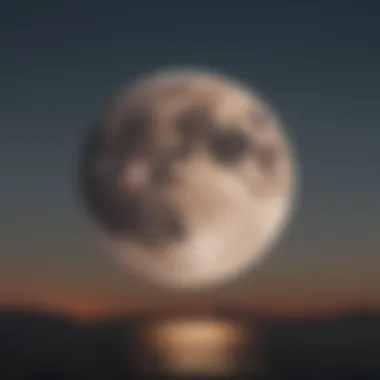

Intro
The Moon, that luminous sphere governing the night sky, doesn't just captivate poets and dreamers; it plays a crucial role in the intricate dance of life on Earth. The current phase of the Moon is not only a visual wonder but also a significant player in how we interact with our environment, particularly for those who seek adventure on the water. As tides ebb and flow with its gravitational pull, understanding lunar cycles can enrich experiences for water sport enthusiasts, surf instructors, and nature lovers alike. This exploration will provide clarity on how the lunar phase influences tides, marine life, and various outdoor activities.
Techniques and Skills
Essential Techniques for Beginners
For those just dipping their toes into the world of water sports, mastering the basics during specific lunar phases can elevate your experiences. First and foremost, paying attention to when the Moon is new or full can significantly impact tidal patterns.
- Timing Your Activities: During a full Moon, high tides are usually higher (called spring tides) and low tides are lower. If you're into surfing, paddle boarding, or kayaking, this is often the best time to catch some amazing waves or navigate calm waters. Conversely, during the new Moon, the tides may be less turbulent but provide excellent opportunities for exploration.
- Understanding Wind Patterns: The lunar cycle influences wind conditions, which can affect water sports. For beginners, it's vital to learn how to read weather forecasts in relation to the lunar calendar. Tools like interactive apps or websites can give you real-time updates.
Advanced Skills for Experienced Watersport Enthusiasts
For the seasoned pro, delving deeper into lunar influences can be the difference between a good trip and an unforgettable one. Here are considerations that can take skills to the next level:
- Surfing the Wave: With advanced knowledge of lunar cycles, experienced surfers can anticipate peak tidal conditions. Utilizing resources that detail lunar positions can lead you to the best breaks when conditions align with the Moon's phase.
- Marine Navigation: Knowing the current lunar phase allows for better navigation strategies. As tides shift, they can create unique currents and eddies—experienced enthusiasts can use these to their advantage, harnessing natural forces to catch bigger waves or find hidden coves.
Equipment and Gear
Must-Have Gear for Each Watersport
Regardless of your experience, having the right gear is paramount. Different water sports call for specific equipment tailored to the conditions dictated by the lunar phase:
- Kayaking: Choose lightweight, durable kayaks designed for tidal conditions. Look into models with adjustable foot braces and comfortable seating for long hours on the water.
- Surfing: Invest in a board suited for your skill level and local waves, and never underestimate the importance of a leash—protect your board and others while enjoying the surf.
- Stand-Up Paddleboarding: Stability is key, so select a wider board if you're a beginner. For advanced paddlers, a touring board can offer speed advantages on calm waters influenced by slower tides.
Tips for Selecting the Right Equipment
Finding the right equipment means considering the lunar phase along with your skill level. Here are some tips:
- Consult Experts: Speak to local sport shops or take lessons to get gear recommendations based on current tide conditions.
- Try Before You Buy: Renting equipment first allows you to assess how well it performs in varying lunar phases without a hefty commitment.
- Read Reviews: Check reputable sources and communities, such as reddit.com or facebook.com, for personal experiences and advice.
"Engaging with water sports during the right lunar phase not only enhances performance but deepens your connection with the rhythm of nature."
Culmination
Incorporating the Moon’s phases into your water sports routine can turn a simple outing into something extraordinary. From planning when to hit the waves to selecting the right gear, understanding these celestial cycles helps you navigate life on the water with finesse and awareness. The tides of the Moon are more than a mere backdrop; they are dynamic, ever-changing, and hold the potential for richer adventures.
Understanding Lunar Phases
Understanding lunar phases is not just an academic exercise; it is a practical guide for those looking to engage more deeply with our natural world. For anyone involved in outdoor activities, especially along the water, the Moon’s cycles can shape experiences in ways that are often overlooked. Recognizing how these phases affect tides, marine behavior, and even human emotions can refine decision-making in adventure planning and enhance overall enjoyment.
The Moon undergoes a consistent phase cycle, transitioning from new moon to full moon and back again. Each stage has its own character and influence which resonates in various ways for water sports enthusiasts and others who frequent nature. Knowing which phase the Moon is in can benefit not only surfers but also kayakers, fishermen, and anyone planning activities tied to the water.
Additionally, understanding lunar phases can foster a deeper connection with nature. It encourages individuals to notice shifts in their environment and promotes awareness of the intricate dance between celestial movements and terrestrial reactions. This knowledge ultimately enriches the outdoor experience and may even invoke a sense of harmony with the universe.
What Is a Lunar Phase?
A lunar phase is the visual representation of how much of the Moon's surface is illuminated by the Sun at a given time. As the Moon orbits the Earth, the angle between the Earth, Moon, and Sun changes, resulting in different fractions of the Moon being visible from Earth. Ranging from a sliver of light to a fully illuminated orb, these phases can be broadly categorized into eight distinct stages: new moon, waxing crescent, first quarter, waxing gibbous, full moon, waning gibbous, last quarter, and waning crescent.
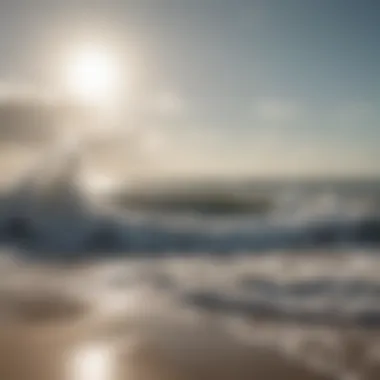
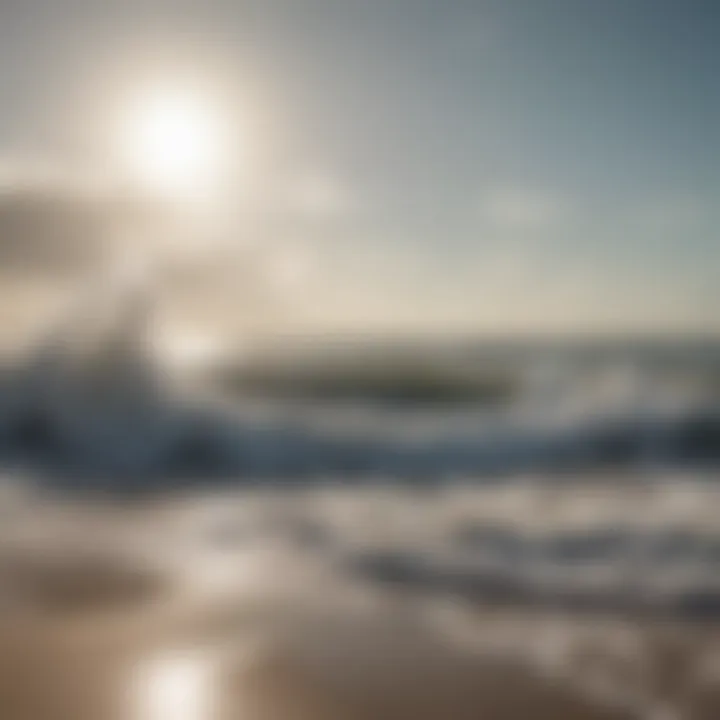
The phenomenon is rooted in simple geometry, but its implications stretch far and wide, influencing everything from wildlife patterns to ocean tides. To truly grasp lunar phases is to appreciate not just their aesthetic beauty, but also their practical ramifications in various spheres of life.
The Cycle of the Moon
The cycle of the Moon is relatively predictable, cycling roughly every 29.5 days. This period is known as a synodic month. Each phase provides a unique backdrop, creating an experience distinct from the previous one. For example, during the new moon, the night sky is dark, often making it difficult to see the Moon at all. Conversely, a full moon bathes the landscape in luminous light, drastically changing visibility and ambiance.
The transitions between the phases include:
- New Moon: No visible moon; a time for reflection.
- Waxing Crescent: A small sliver of light appears; encouraging growth in ideas and endeavors.
- First Quarter: Half of the Moon is illuminated; a time for decision-making.
- Waxing Gibbous: Nearly full; anticipation builds toward completion.
- Full Moon: The Moon is fully illuminated; symbolizes culmination and fruition.
- Waning Gibbous: Light begins to fade; invites release and closure.
- Last Quarter: Similar to the first quarter, but symbolizes reflection.
- Waning Crescent: The Moon wanes to a sliver; a time for meditation before the cycle begins anew.
With this cyclical rhythm, adventurers can align their activities with the Moon’s phases—whether it's planning a night fishing trip or unpacking the surfboards.
Importance of the Lunar Cycle
The lunar cycle is more than a cosmic clock; it possesses tangible importance for various activities, particularly those tied to water.
- Tidal Influence: The Moon's gravitational pull affects tides, leading to high and low tides which are vital for fishing, surfing, and other watersports.
- Marine Life Behavior: Many species exhibit behavioral changes that correlate with lunar phases, particularly during the full moon when some undertake migrations or spawning.
- Outdoor Planning: For outdoor enthusiasts, knowledge of the lunar cycle allows for optimized planning, ensuring the best conditions for their activities.
- Cultural Significance: Historically, many cultures have based agricultural practices and festivals on lunar cycles, linking nature's rhythm to human activity.
Understanding these aspects enhances both recreational and practical decision making in outdoor environments, fostering a greater awareness and respect for natural forces at play.
Identifying the Current Moon Phase
Understanding the current phase of the Moon is not just a matter of astronomical curiosity; it plays a crucial role for those engaged in water activities. When it comes to understanding tides, marine life behavior, and optimizing outdoor events, knowing the Moon's phase can make or break an experience. Being aware of whether the Moon is waxing or waning, for instance, can guide water sport enthusiasts in planning their engagements with nature effectively.
How to Determine the Current Phase
Determining the current lunar phase isn’t rocket science, but it does require a bit of attention and awareness. There are a few simple methods to ascertain what phase the Moon is in:
- Watch the Night Sky: The easiest way to determine the phase is by taking a gander outside. If it’s dark and you see a sliver, it’s likely a waning crescent. If it’s fairly bright and round, you might be observing a full Moon.
- Use a Lunar Calendar: Keeping a lunar calendar at hand is handy. These calendars provide you with the exact phases on corresponding dates, letting you know what to expect for the week.
- Mobile Apps: Technology comes to the rescue here with various apps available. One popular one is "Moon Phase Calendar" which provides not only phases but also moonrise and moonset times.
By employing any of these methods, one can easily figure out the Moon’s current phase and be prepared for what it might mean for their intended activities.
Using Astronomical Tools
For the more geeky or serious enthusiasts, there are specialized astronomical tools available that can enhance lunar observation:
- Telescope: A good telescope can provide enhanced views of the Moon, making it easier to see the craters and surface details, which can be particularly captivating during certain phases.
- Meteo Stations: Local meteorological stations often provide data on the Moon's phase, alongside tide predictions, which can be useful for sailors and fishermen.
- Astronomical Software: Software like "Stellarium" offers comprehensive details about the Moon and its phases, guiding users step-by-step, as well providing the celestial context.
Learning about the current moon phase can serve as a compass when planning for events and activities, especially those tied to marine or nature-related endeavors.
In summary, identifying the current lunar phase equips individuals with valuable knowledge that enhances their understanding of nature and informs their participation in water-based activities. Preparing ahead of time means smoother sailing or a more fruitful fishing trip, regardless of the sport.
Lunar Phases and Tides
Understanding the relationship between lunar phases and tides is crucial for anyone involved in water activities, from sailing to surfing. The gravitational pull of the Moon affects not just the oceans, but the very rhythms of life within them. Being in tune with these celestial cycles can mean the difference between a good day out on the water or an unexpected challenge.
Connection Between Moon Phases and Tidal Patterns
The lunar cycle, which spans roughly 29.5 days, plays a pivotal role in determining tidal patterns. Each phase of the Moon, whether new, waxing, full, or waning, has distinct effects on the level of tides. This happens because the Moon’s gravitational force interacts with the biosphere of our planet, pulling water toward it and creating bulges that establish high and low tides.
Key insight: The alignment of the Earth, Moon, and Sun during full and new moons creates particularly pronounced spring tides, resulting in high waters that can influence navigation and marine activity significantly. Conversely, during the first and third quarters, we experience neap tides, where the difference between high and low tides is less profound.

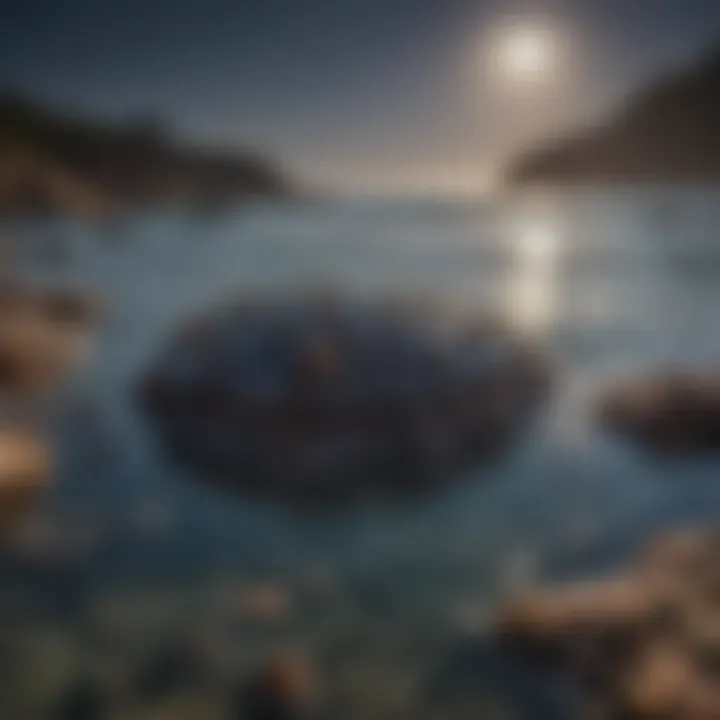
Understanding these fluctuations can help marine enthusiasts and professionals alike to make informed decisions about their activities on the water. For instance, knowing when to expect higher tides can guide surfers looking for optimal wave conditions.
Impact of Different Phases on Watersports
Watersports receive a notable impact from lunar phases, with each phase bringing unique conditions that can either enhance or hinder activities.
Surfing Conditions
Surfing conditions are largely influenced by the moon's cycle. During a full moon, tides are higher, which often creates more favorable wave conditions. Surfers frequently flock to popular spots, as the waves tend to have more power. While a full tide can promise thrilling rides, it can also lead to dangerous rip currents. Thus, the key characteristic of surfing during this phase is the thrilling conditions that engage both adrenaline junkies and seasoned surfers. The unique feature of full moon surfing is the powerful alignment of tidal forces, although caution is advised.
Kayaking and Canoeing
When it comes to kayaking and canoeing, the lunar phases can dictate the water's temperament. Paddlers often prefer neap tides, characterized by less extreme fluctuations in water levels. This makes for a more stable and enjoyable paddling experience. The key draw here is the ease of navigation when tides are lower, allowing kayakers to explore channels or rivers more safely. However, planning is crucial, as the onset of a spring tide can pose challenges in shallow waters.
Sailing and Navigation
For sailors, understanding the phases of the moon is paramount for successful navigation. Full moons illuminate the night, aiding sailors in low-light conditions, while higher tides open up new navigation routes, which can be beneficial for planning longer journeys. The rhythmic nature of tides allows for more predictable travel times when critical tidal windows are considered. Despite the benefits, sailors must also be cautious of the rapid changes that can occur; hence, awareness of tidal patterns throughout lunar cycles is essential for any captain.
In summary, the direct correlation between lunar phases and water activities underscores the necessity of awareness for safe and enjoyable experiences on the water. Whether riding the waves or paddling down a serene waterway, alignment with lunar cycles can enhance one’s relationship with the marine environment.
Effects of the Moon on Marine Life
The relationship between the Moon and marine life is a captivating topic, highlighting how celestial movements can have tangible effects on Earth’s ecosystems. The lunar phase can influence marine species in various ways, impacting their behavior and spawning habits. This connection draws the interest of sports enthusiasts, anglers, and anyone keen on understanding more about nature’s rhythmic cycles.
Behavioral Changes in Marine Species
When it comes to how marine creatures react to the Moon, the changes are less subtle than one might think. For instance, many fish exhibit distinct behavioral patterns tied to the lunar cycle. During a full moon, certain species might become more active, swim closer to the surface, or even change their foraging habits. This behavior can play into feeding patterns, making this time optimal for catching fish. Conversely, during the new moon, many fish may retreat deeper into the waters, becoming less visible and harder to catch.
Here are a few examples of species that are influenced by lunar phases:
- Snapper: Known to spawn more vigorously during the full moon due to increased light levels, which encourages mates to engage in the spawning ritual.
- Turtles: Sea turtles also exhibit behavior that is aligned with the lunar rhythm; they often hatch during specific phases, using the light of the moon to find their way to the ocean.
- Plankton: Even the tiniest life forms aren’t immune; the population of plankton tends to vary with the moon cycle, potentially affecting the entire food chain.
These shifts in behavior demonstrate that the Moon’s influence is woven into the fabric of marine life, dictating the rhythms of nature.
Lunar Influence on Fishing
From the perspective of fishing, understanding lunar influence can make or break a fishing trip. Fishermen often consult lunar calendars to plan their outings, seeking to align with the phases that are believed to boost fish activity.
When the moon is full, anglers often report heightened success rates as fish tend to move around more, seeking food. Here are some important considerations regarding fishing and lunar phases:
- Timing: Fish are generally more active in the hours surrounding a full moon. Scheduling fishing trips during these times can increase the likelihood of a successful catch.
- Night Fishing: Nighttime fishing during the full moon can be particularly fruitful; not only does it provide increased visibility, but many fish species feed more actively in the dark.
- Spawning Seasons: It’s crucial to be aware of when specific species spawn, as this can affect their availability. For example, if a species typically spawns during the new moon, late-night excursions under moonlight might yield empty hooks.
"The connection between lunar phases and fish behavior isn't a myth; it's a well-documented phenomenon that serious anglers should consider when planning their outings."
This methodical approach to fishing, grounded in lunar cycles, highlights how deeper knowledge of nature’s behavior can significantly enhance one’s experience and success in watery pursuits. Armed with this understanding, both enthusiasts and professionals can adapt their strategies to align with this celestial rhythm, making the most of their time on the water.
Cultural and Historical Perspectives
Understanding how various cultures perceive and utilize lunar phases not only sheds light on human behavior but also enriches our appreciation of nature. The Moon, with its ever-changing face, has been a canvas upon which humanity has projected its hopes, fears, and beliefs. This section delves into the myths and legends that have revolved around the Moon and explores how lunar calendars have played a pivotal role in organizing agricultural and social activities across different societies. By examining these cultural narratives and historical practices, we pave the way for a deeper understanding of the interactions between human endeavors and celestial phenomena.
Lunar Myths and Legends
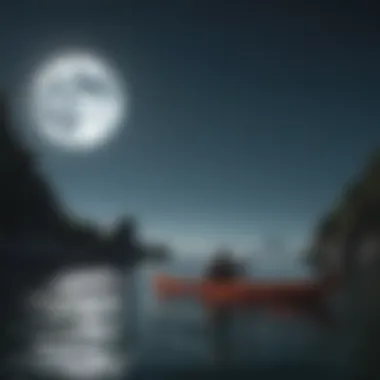
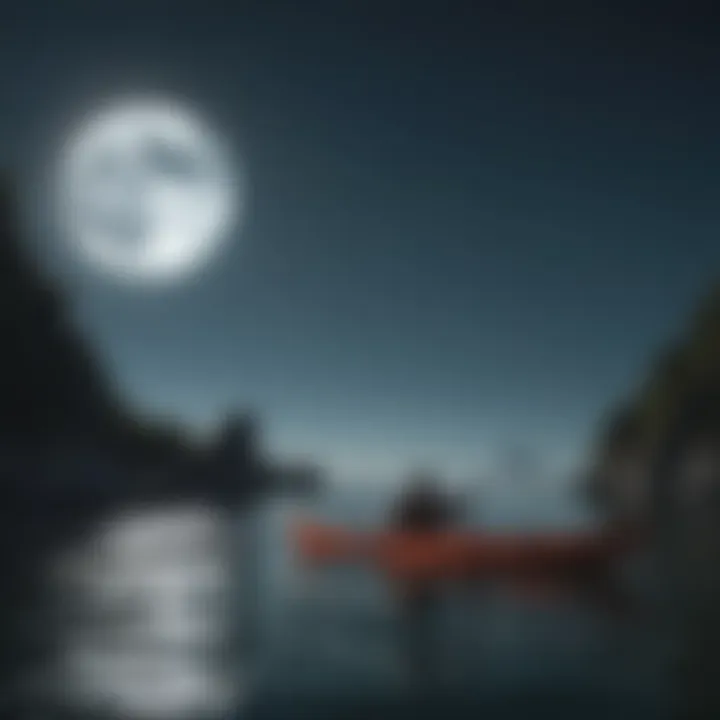
Throughout history, many civilizations have spun intricate tales about the Moon. From ancient Greece to the indigenous tribes of North America, lunar legends serve as a testament to humanity's quest to relate to the cosmos.
For instance, the Greeks spoke of Selene, the goddess of the Moon, who was often depicted riding a chariot across the night sky. This imagery reflects a sense of reverence and personification of celestial bodies, which helped early societies make sense of their world. Likewise, in various Native American cultures, the Moon is viewed as a powerful being that influences the cycles of nature and human behavior. The Lakota tribe believes the Moon is both a male and female entity, representing balance in the universe.
"The Moon has guided sailors, inspired poets, and shaped civilizations, reflecting the intricate bond between humankind and the celestial."
Each story, varying from culture to culture, not only entertains but serves a purpose; they often carry moral lessons or explain seasonal changes. Moreover, as these tales transcended generations, they influenced rituals and agricultural practices aligned with different lunar phases. For instance, some tribes set events like hunting or planting according to the lunar cycle, taking advantage of the Moon's position to determine the best times to act.
Historical Use of Lunar Calendars
Lunar calendars have been instrumental in human civilization, marking days and guiding agricultural practices. Many cultures relied on the moon’s cycle to determine the best times for planting and harvesting—crucial information for societies tied closely to the land.
Key examples include:
- The Jewish Calendar: This calendar is lunar-based, consisting of twelve lunar months and significant religious observances tied to specific moon phases.
- The Islamic Calendar: Another lunar format, it serves as the basis for prayer, fasting during Ramadan, and pilgrimage timings.
- Chinese Calendar: This calendar blends lunar phases with solar terms, guiding agricultural and festival practices, connecting the lunar cycle to seasonal changes.
Utilization of lunar calendars persists today, influencing various activities in agriculture, fishing, and even setting up events in the modern context. They remind us how our ancestors relied on the Moon’s phases to maintain their rhythm with nature—a connection that is not fully lost, even in our technologically driven world. The relationship between the Moon and human life remains a significant area for exploration.
In summary, the cultural and historical perspectives of lunar phases reveal the enduring impact of the Moon on human civilization. From inspiring myths to guiding practical decisions surrounding agriculture and lifestyle, this celestial body continues to influence our lives in profound ways.
Modern Applications of Lunar Phases
The modern world provides ample opportunities to leverage the lunar cycle in practical ways, especially for those interested in outdoor activities like watersports. Understanding how lunar phases affect various natural phenomena can lead to heightened enjoyment and safety. In this section, we’ll dive into how lunar calendars can assist in planning activities and the technological advancements that aid in lunar tracking.
Lunar Calendars for Planning Activities
Incorporating lunar calendars into your planning tools comes with a plethora of benefits. These calendars are not merely charts of the moon’s phases; they can serve as guides to optimal times for activities such as fishing, surfing, or even stargazing. Here are key points to consider:
- Timing Matters: For instance, many experienced fishermen often swear by lunar phases for achieving high catches. The theory is that fish are more active during specific moon phases, particularly around full moons when they gather in larger numbers.
- Water Conditions: Surfing conditions can also vary significantly with the moon. Waves tend to respond to lunar tides, which means that understanding when high tide occurs can lead to better surfing experiences.
- Interest in Night Activities: If you're planning an evening activity, such as a night hike or a beach bonfire, knowing the current lunar phase can also be critical. A bright full moon can illuminate trails perfectly, while a new moon might offer a truly dark sky, great for observing constellations.
- Cultural Events: Various cultures celebrate events based on lunar cycles. Planning a gathering aligned with full moons or new moons can enhance the experience, adding a layer of connection to nature.
Keeping a lunar calendar handy might just streamline your adventures, giving you an edge in these activities.
Technological Innovations in Lunar Tracking
The advancements in technology have opened up new avenues for tracking lunar phases with ease and precision. Gone are the days when you needed to rely solely on printed calendars or crude calculations. Today, you can access a range of apps and tools that not only keep track of the moon's phases but also provide additional contextual information. Here’s a look at some of the innovations:
- Smartphone Applications: Various apps available today allow users to easily forecast lunar phases. These applications are often equipped with GPS functionality that makes them even more user-friendly. Users can obtain local moon phase data, offering insights that are fine-tuned to their specific geography.
- Astronomical Software: For those particularly interested in astrophotography or astronomy, software tailored for tracking lunar phases can help optimize viewing conditions. Features may include interactive sky maps that show when specific lunar phenomena will occur, allowing users to plan their nighttime adventures more effectively.
- Incorporation with Wearable Tech: Wearable devices increasingly integrate information about the lunar cycle, helping users keep track of daily spiritual practices or activity planning related to lunar phases.
- Online Forums and Communities: Platforms like Reddit provide a space where enthusiasts share experiences and suggestions on how best to utilize the lunar phases in their activities. Engaging with these communities can yield valuable tips and personal anecdotes from fellow adventurers.
In summary, the marriage of lunar knowledge with modern technology offers powerful tools for sports enthusiasts and outdoor adventurers alike. Embracing these methods enhances the connection with nature while effectively planning and executing outdoor activities.
Epilogue
In synthesizing the intricate dynamics of lunar phases, we uncover a realm significantly intertwined with both nature and human activity. The current lunar phase plays a crucial role in various domains, from tidal behaviors to marine life patterns, fundamentally influencing how we engage with water-centric pursuits. Grasping these influences not only fosters a greater appreciation for the natural world but also arms enthusiasts and professionals alike with vital insights for planning activities effectively.
Summary of Findings
Our exploration has revealed several key takeaways:
- Tidal Variances: The gravitational pull of the Moon, especially during specific phases, significantly impacts tide cycles. Understanding this can help sailors and surfers anticipate conditions.
- Fishing Patterns: Many fish species exhibit behavioral changes in sync with the lunar cycle, which can be invaluable knowledge for anglers looking to optimize their catch.
- Cultural Significance: Historically, many cultures have crafted calendars based on lunar phases, directly aligning their agricultural practices with the celestial ballet above.
This comprehensive look at the influence of the Moon allows us to navigate our endeavors in a more informed manner, enhancing both our experiences and outcomes.
Future Topics of Interest
As we conclude, several intriguing avenues for further exploration beckon:
- Lunar Effects on Other Ecosystems: Beyond marine life, how do various lunar phases influence terrestrial ecosystems? An in-depth study could unveil more complex interactions within the food web.
- Technological Advances in Lunar Tracking: With the advent of new technologies, what future innovations will help us better track lunar phases and their potential impacts? An investigation into emerging tools might equip adventure seekers and guides with better forecasting capabilities.
- Cultural Interpretations of the Moon: Different cultures have varying interpretations of lunar phases. An exploration of these perspectives could enrich our understanding of global cultural practices and beliefs.







